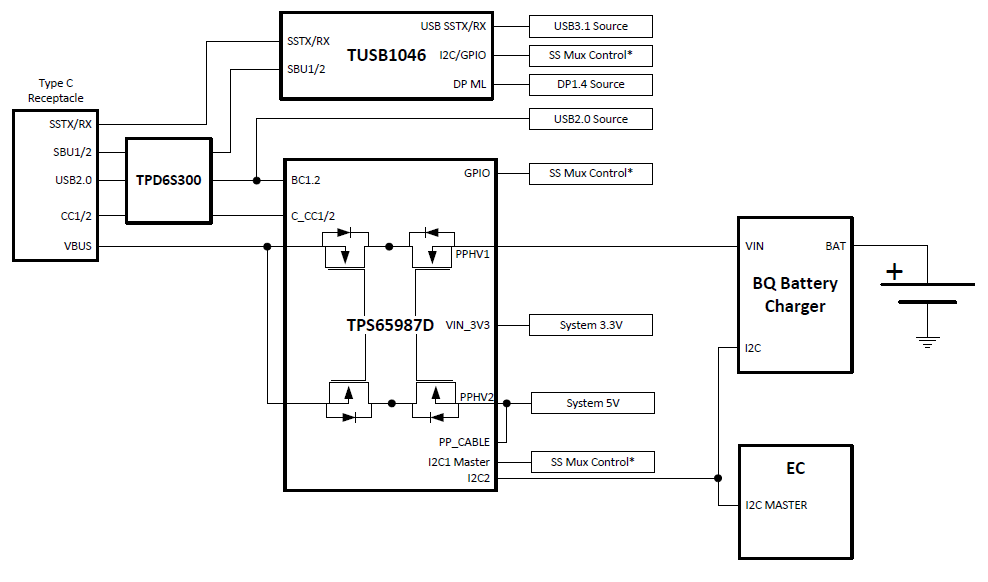Hi,
I am designing a commercial handheld device which needs to charge from USB. I also need USB2 data to a host processor.
The current aim is a USB C connector, although I may not have much control over what the end user plugs it into.
I understand that various charging current are available - 500mA of USB2, 900mA for USB3, 3A for USB-C. I want to charge at a minimum of 5V/1A where that is available.
I have a charger which can be programmed with the desired charge current by the host processor, although the charger itself cannot detect all those different current capabilities. So far as I can tell, the host processor's USB port can detect a charger, but not its capability.
What I am missing is that presumably there needs to be a device on the USB D+/D- lines and likely to USB C CC lines to detect the charger capability. However, I am having difficulty identifying what chip or chips those might be. So far, the chips I have found are either intender for the charger-end of the cable, or detect the charger without divulging its capability.
Can you point me in the direction of the correct parts, please?
Thank you.



